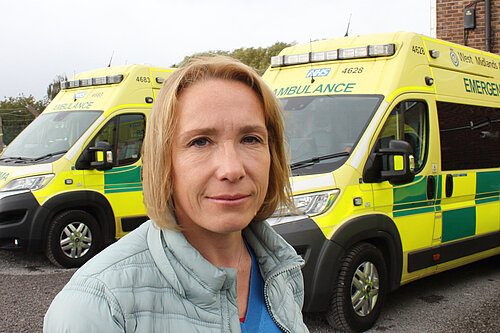
Helen Morgan responds to new Shropshire ambulance data
MP and health campaigner Helen Morgan has said she remains ‘worried sick’ about emergency care in Shropshire but is relieved that some progress has been made.

Ambulance delays for life-threatening calls in the West Midlands reached a new record high in December, shocking new NHS figures have revealed.
The average ambulance response time for the most urgent incidents (Category 1) in the region in December was 9 minutes and 14 seconds in December – well in excess of the NHS target of 7 minutes.
Meanwhile response times for urgent conditions such as heart attacks and strokes (Category 2) are also the longest on record. Patients with these emergencies are now waiting one hour and 31 minutes for help from the West Midlands Ambulance Service - more than five times longer than the 18-minute target.
In December 2021, the average Category 2 response in the region was 14 minutes and 46 seconds.
New figures also reveal the scale of the crisis in the region’s hospitals.
At Shrewsbury and Telford Hospitals, 1,401 people waited over 4 hours to be seen in December. Even more alarmingly, 962 people waited over 12 hours to be seen in December during the winter crisis.
The Liberal Democrats have set out a five-point plan to tackle the ambulance service crisis. The party is demanding the Government release the money they promised to help discharge patients from hospitals, as soon as possible.
Helen Morgan, Liberal Democrat MP for North Shropshire, said:
“These damning figures show how the Government has failed people in Shropshire and across the country.
“Conservative neglect means it is now normal to wait 90 minutes if you suffer a heart attack and – and often much longer – and to wait hours and hours once you get to A&E.
“Every week I speak to a different family who have been forced to watch a loved one suffer in pain as they wait for help to arrive. Too many people have died because of these heartbreaking delays.
“How much more evidence do Ministers need? They either don’t care or just can’t grasp the scale of this problem.
“Our NHS isn't just at breaking point - it’s splitting at its very seams.
“In just two years the Government has allowed ambulance response times for heart attack victims to get six times worse in the West Midlands and the worst delays are in Shropshire.
“Action is long overdue. Liberal Democrats are demanding the Government release the money they promised to help discharge patients from hospitals, and launch a campaign to recruit the extra paramedics and ambulance staff we need.”
<hr/>
Notes
Ambulance crisis – Liberal Democrats’ 5 Point winter plan
Ambulance categories and targets
Category 1 incidents are when an immediate response to a life-threatening condition, such as cardiac or respiratory arrest, is needed. The NHS target is an average response time to these incidents of 7 minutes, and for 90% of them to be responded to within 15 minutes.
Category 2 incidents are urgent emergencies such as strokes or suspected heart attacks. The NHS target is an average response time to these incidents of 18 minutes, and for 90% of them to be responded to within 40 minutes.
A&E targets
Four-hour A&E waiting time target is a pledge set out in the Handbook to the NHS Constitution. The operational standard is that at least 95% of patients attending A&E should be admitted, transferred or discharged within four hours.